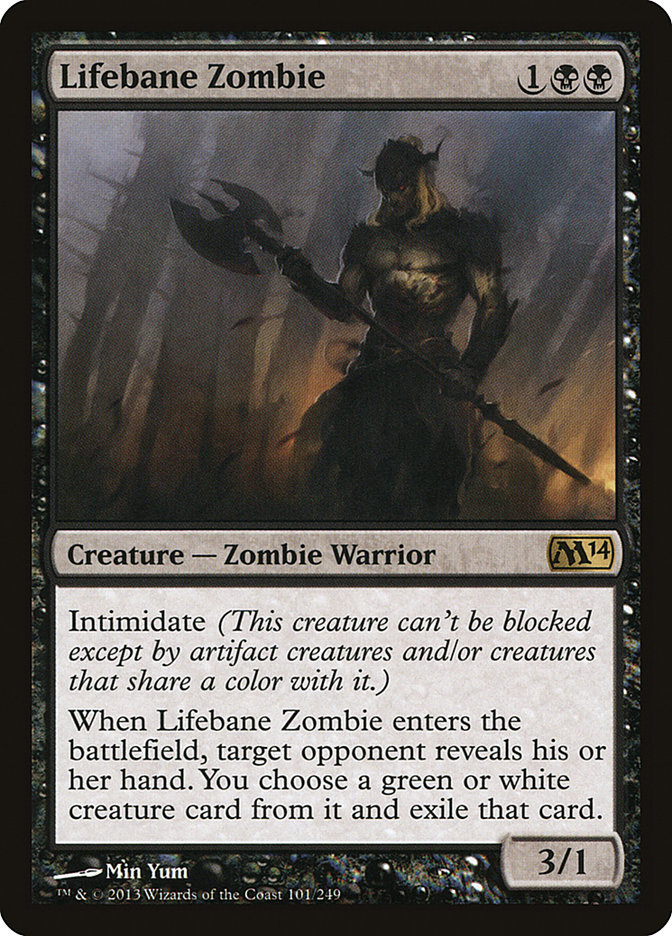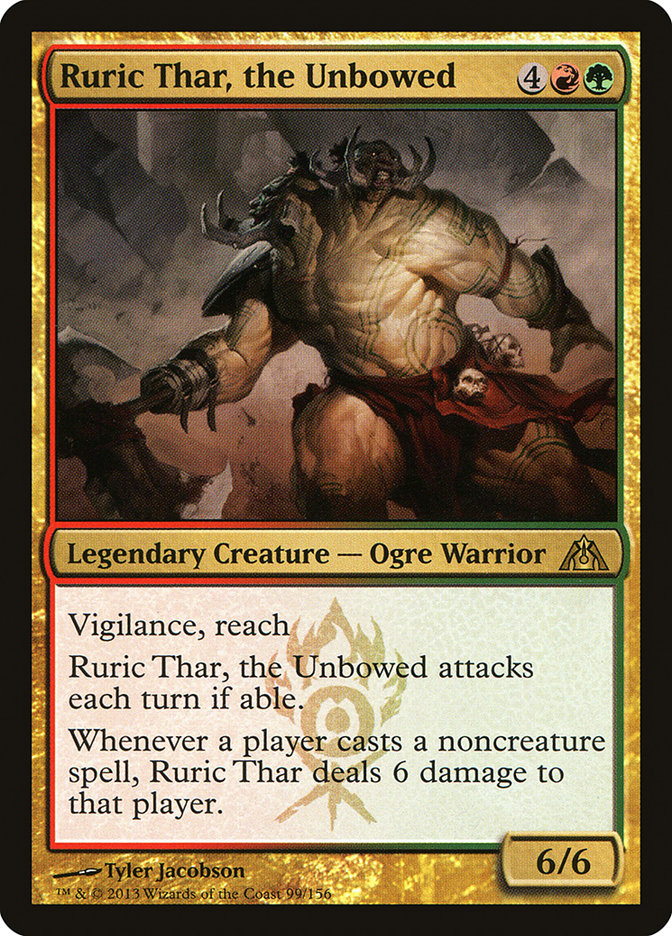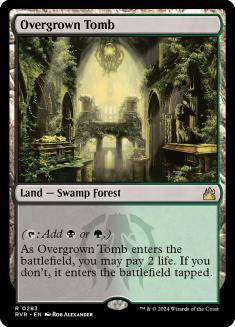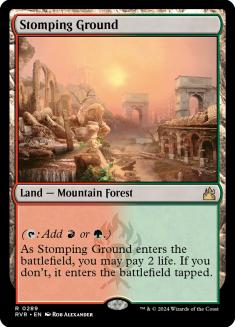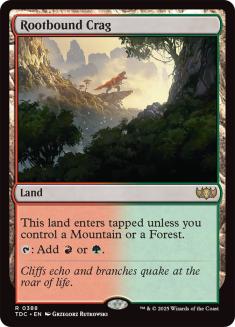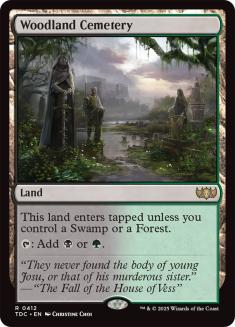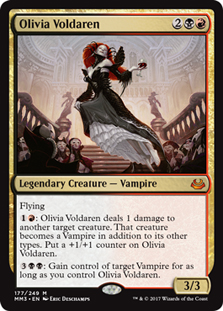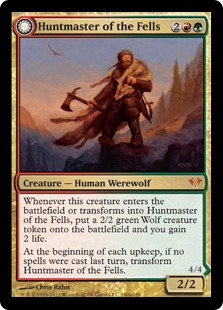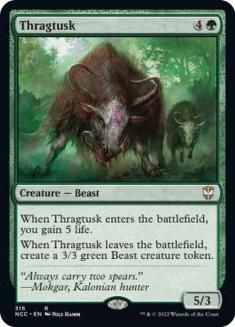Hey everyone! I’m John Rolf. You probably haven’t heard of me, but I’m from Omaha, Nebraska and have been grinding Magic off and on since around Ravnica block. Most of the hours I have put into the game have been on Magic Online with my brother David. I play under the names Eternalwitness101 and Sir_Gnarls_Barkley with my brother Mini_Gnarls.
When I started playing Magic Online around 2005, there was a clan of up-and-coming young players known as Osyp Drives Me To School. This clan produced a bunch of current-day pros as well as multiple Player of the Years, including SCG’s very own Brad Nelson, who is now the captain. I almost always got beat by the players in it and saw them win countless events. The clan was also always on the shortlist of those with the most amount of booster packs won. This was when clans actually had a functional chat and Magic Online decklists were unpublished, making having the newest list for the metagame extremely important. You could often get a huge edge just by being in the know and having good people to chat with and share knowledge.
Needless to say, I really wanted to get into the clan. The first couple of times I applied I was denied, but I started doing well enough to get accepted. That was really the start of my Magic career and when I began playing an almost unthinkable amount of Magic. It was also when I met some great friends that I still have today.
Later I started playing paper Magic and won a couple JSS tournaments, earning me some scholarships for college. I then made Top 8 of my first PTQ and ended up winning it, qualifying me for the Pro Tour. I went on to play in more Pro Tours and put up good results in both Grand Prix and Nationals, but I eventually quit the game to finish my last years of college.
As we all know, though, quitting Magic indefinitely is very hard if not impossible. Fast forward to the current day and I have the full fire again. In the last month and a half, I have won a PTQ, made Top 4 of a 500-person SCG Open, and made over $2,000 playing the game. I credit this to something I learned very early on in my Magic career:
Always have the turn 2 Farseek in your opening Jund hand.
Ok ok, what I meant to say was don’t be afraid to play the best deck in the format when it really is the best! Right now we have a best deck, and it is Jund. The cards it plays are the most powerful Standard has to offer, and the deck can give you unbeatable draws no other deck can. Between a cash tournament, the PTQ, and the Open, I have lost a total of one match with the deck. It’s that good!
This is list I played at the StarCityGames.com Standard Open in Minneapolis:
Creatures (18)
Planeswalkers (1)
Lands (25)
Spells (16)

It’s basically a standard Jund deck with the addition of four Lifebane Zombies to the maindeck in place of the Vampire Nighthawks I played in the PTQ before M14 was legal. Three Scavenging Oozes were added from M14 as well. These two cards have pretty much made the pre-M14 powerhouse Junk Reanimator deck almost obsolete. This in turn shifted the metagame away from hyperaggro decks and more towards midrange decks that previously could not or had a difficult time beating Junk Reanimator (see U/W/R Flash / Naya / Jund).
One important thing to keep in mind with Scavenging Ooze in the deck now is that both early-and late-game Farseeks are not as mindless as they used to be. You will almost always want to search out as many green-producing shocklands as you can to enable yourself to cast green spells and still keep up green for Ooze’s ability. It also allows you to have multiple triggers at once when you need to remove someone’s graveyard quickly to either gain life or shut down an engine.
This actually came up in round 2 of #SCGMINN when my opponent slammed a Shadowborn Demon, killing my Huntmaster of the Fells. I didn’t think I had many outs since I was in topdeck mode and had already used almost all of my removal that could kill it. Fortunately, Scavenging Ooze was waiting on the top of the deck for me, and because I had searched out green mana aggressively, I was able to play Ooze, remove seven creatures from his graveyard at once, and force him to sacrifice the Demon.
Despite how great Ooze is, let’s talk about the more exciting of the two in my opinion:
I played two in my sideboard up until seeing a deck tech with four in the main at the World Championship last week, and it just made sense to me. After all, when you think about it, the only matchups the card is not very good against are U/W/R Flash and Esper. To be fair, that same tournament also contained a huge amount of U/W/R Flash, which made me think four copies of Lifebane Zombie was too many if U/W/R Flash was about to spike in popularity.
I quickly trimmed the number down to three, adding the second Garruk, Primal Hunter to the main, and at one point actually moved them down to two. After thinking about it more, though, I realized four seemed like the best number because 1) you always want one in your opener and 2) even if I trimmed/removed Lifebanes from my main, I would still be unfavored against U/W/R Flash game 1.
These two things coupled with the fact that SCG Standard Opens tend to be heavy on aggro in the Swiss made my decision easier. Lifebane Zombie also has the upside of allowing me to see my opponent’s hand. As a former chess player, I probably value this a little higher than most, but operating with nearly complete information can make finding the right plays and lines a whole lot easier.
The other card I can definitely say not all Jund decks have in their 75 that I think is great is this guy:
Ruric Thar was originally Slaughter Games until it became apparent the two frontrunners of the format would be U/W/R Flash and Jund going into the tournament. If I was only worried about U/W/R Flash, I would lean towards Slaughter Games since it shuts down their most powerful card against you: Sphinx’s Revelation. However, I wanted a card in that slot that’s good against both decks, and Ruric Thar happened to fit the bill. Deadbridge Chant was also a consideration because it is probably the single best sideboard card for the Jund mirror that exists today, but I was not as impressed with it versus U/W/R Flash as I was with Ruric Thar.
Ruric Thar was consistently a beast (ok, Ogre Warrior) in control matchups all day Saturday and definitely netted me wins I would not have otherwise had. It’s easy to look at it as just another big fatty that gets countered, but control decks do not have infinite counters and Ruric Thar is usually the final blow. He’s also very difficult to deal with for opposing Jund players since they often trim a lot of their removal to make room for better cards. Ruric Thar is a great play when you’ve managed to create a decent board position and an even better topdeck if you’re in a topdeck war (which Jund mirrors often come down to). He also has the very unique ability of just straight-up blocking Thragtusk effectively while bashing for six.
As for the tournament itself, I do not have a whole lot to say other than that it went very well. I had standard Jund draws and was able to punish my opponent’s decks that were packed with less impactful cards. I started out 8-0 in the Swiss and then double drew into Top 8. I ran extremely well and didn’t really have to deal with mulligans until the Top 4, which was very nice. I also did not have to play the mirror match I was expecting, which was a huge plus. The decks I played against in order were: G/R Aggro, Junk Reanimator, U/W/R Flash, The Aristocrats, Esper, Esper, Junk Aristocrats, and Kibler G/R.
I beat U/W/R Geist in the quarterfinals despite my opponent telling me it was his best matchup and he’d 2-0ed it very easily in the Swiss. One notable play of the day included my opponent getting rid of his Tamiyo to ultimate it with a Dissipate in hand versus my 3/3 Scavenging Ooze. He then attempted to counter my Olivia Voldaren and get back his Dissipate, thinking I was locked out of the game. Unfortunately, he found out Ooze can in fact remove the card before it returns to your hand. I then proceeded to topdeck Rakdos Return for e-l-e-v-e-n for exactsies.
He was not happy.
My tournament was cut short in the Top 4 the next day, however, when I was eliminated in the mirror match. It was here I got to experience some truly skill-intensive Olivia-on-Olivia action.
I’d like to talk to you guys about Jund in general and how to approach your matchups if you do decide to play it. One of the first things you will notice about Jund is the great two-for-one value all the cards in it provide. This ranges from creatures like Thragtusk, Huntmaster of the Fells, and Lifebane Zombie to spells like Bonfire of the Damned, Mizzium Mortars, and Rakdos’s Return. All of these cards net you equity the longer the game goes as your opponent will almost assuredly run out of resources before you unless they are able to cast something like a large Sphinx’s Revelation. This is where the matchups you will face break down. I like to think of them in my head very simply as aggressive decks, midrange decks, and control decks just like any other deck you would play.
Aggressive
These decks include R/G Aggro, Naya Blitz, and Bant Hexproof. The game plan for Jund is just like any other midrange/control vs. aggressive matchup: don’t die to an early rush and you’ll win. This is actually fairly easy with Jund if played correctly. You have plenty of early removal (Tragic Slip / Putrefy / Dreadbore / Mizzium Mortars) as well as creatures that will catch you up on board and in life (Huntmaster of the Fells / Thragtusk / Scavenging Ooze). Bant Hexproof is kind of an exception since a lot of their cards have hexproof, which means you need to focus more on their early plays and setting up Bonfire of the Damned or Liliana of the Veil activations.
If you’re having trouble with decks like R/G Aggro, make sure you are mulliganing aggressively enough. Understand these decks have a single-minded plan, and don’t be afraid to go to six or even five to get that early removal spell in your hand. Take this hand for example:
On the draw this hand is virtually unkeepable against R/G Aggro, and on the play it isn’t much better. Yes, it has some great cards versus aggro, but I can’t stress enough the importance of early removal in your opener.
Also aware that a lot of these decks will be packing multiple Burning Earths in their sideboard. I watched my friend and fellow Osyp Drives Me To School member Brandon Nelson get eliminated from Top 8 contention in heartbreaking fashion by being stuck under two of these. While this card is generally less of a card for a deck like Jund since we can just take five for our Thragtusk and gain it right back, you still need to be proactive and try to make sure you’re ahead on board. Do not forget to board in your Golgari Charms from the sideboard. Yes, they can be awkward if they do not have the Burning Earth, but worst case they can kill x/1s, make combat favorable for you, and even regenerate your guys through removal.
Midrange
These matchups are also good but not as much as the aggressive ones. Deck that fall into this category include Naya, The Aristocrats, Junk Aristocrats, Junk Reanimator, Jund and the new Kibler G/R. It will really come down to the cards they’re playing and whether or not they have any specifically for Jund. That being said, there is no midrange deck I am unhappy to get paired against except Jund itself. Other than that, Kibler G/R and Naya are probably the scariest since Thundermaw Hellkite and Domri Rade can be very bad for you if left unchecked.
Approach the games by just trying to maximize value on every turn and eventually take over the game with cards like Olivia Voldaren and Huntmaster of the Fells. Killing a mana dork like Avacyn’s Pilgrim or Elvish Mystic can be super effective and is almost always correct because it prevents them from playing proactively and makes their draws a lot less explosive. Be willing to trade off your guys with theirs to keep the board uncluttered since it will minimize the effect of cards like Hellrider, Domri Rade, and Blood Artist.
Control
These decks are your "worst matchups" because they contain useful cards to combat your card advantage, including card draw, mass removal, and counterspells. During the tournament, I played against numerous U/W/R Flash and Esper decks. The counters are particularly annoying since they mitigate the effectiveness of an early Farseek. There are also a ton of dead cards in your maindeck that you will risk having stuck in your hand.
Fortunately, Jund has a large pool of great cards to choose from post-board against control, and we can utilize early disruption with cards like Duress and Liliana of the Veil to mitigate the usual effectiveness of the troublesome Sphinx’s Revelation. Against control at #SCGMINN, I brought in a total of twelve cards post-board. If you lose game 1, don’t be upset, as it is expected and you are a favorite post-board. If you do win, consider it a steal and be happy knowing the match just became that much easier.
Generally, in game 1 you want to be as aggressive as possible because you have so many dead cards you cannot risk drawing later in the game. This often means just jamming what you have into open mana and forcing them to have the answer. This isn’t to say you shouldn’t be aggressive post-board, just that you can play the matchup more intricately knowing you have late-game trumps like the aforementioned Liliana of the Veil, Underworld Connections, and Ruric Thar.
I’ll leave you guys with general guidelines on how to sideboard. When you board, though, make sure you are willing to adjust it based on the cards you saw out of your opponent, their general play style, and how they appear to be approaching the match. I would never advise going into a tournament with a sideboard plan that you do not ever plan to deviate from.
R/G Aggro: -2 Rakdos’s Return; -1 Garruk, Primal Hunter; -1 Olivia Voldaren; +2 Golgari Charm; +2 Pillar of Flame
Bant Hexproof: -2 Rakdos’s Return; -1 Garruk, Primal Hunter; -3 Scavenging Ooze; -2 Putrefy; -2 Dreadbore; +2 Golgari Charm; +3 Liliana of the Veil; +2 Pillar of Flame; +1 Bonfire of the Damned; +2 Duress
Junk Aristocrats: -2 Rakdos’s Return; -1 Garruk, Primal Hunter; -1 Tragic Slip; -1 Putrefy; +2 Golgari Charm; +2 Pillar of Flame; +1 Bonfire of the Damned
The Aristocrats: -2 Rakdos’s Return; -1 Garruk, Primal Hunter; -2 Lifebane Zombie; +2 Golgari Charm; +2 Pillar of Flame; +1 Bonfire of the Damned
Naya / Kibler G/R: -2 Rakdos’s Return; -1 Garruk, Primal Hunter; +2 Pillar of Flame; +1 Bonfire of the Damned
Jund Mirror: -3 Scavenging Ooze; -1 Tragic Slip; -1 Putrefy; -1 Mizzium Mortars; -1 Bonfire of the Damned; +2 Underworld Connections; +2 Ruric Thar, the Unbowed; +1 Rakdos’s Return; +2 Duress
Junk Reanimator: -2 Rakdos’s Return; -1 Garruk, Primal Hunter; +2 Pillar of Flame; +1 Bonfire of the Damned
U/W/R / Esper: -4 Lifebane Zombie; -2 Tragic Slip; -1 Mizzium Mortars; -2 Dreadbore; -3 Bonfire of the Damned; +2 Underworld Connections; +2 Golgari Charm; +2 Ruric Thar, the Unbowed; +3 Liliana of the Veil; +1 Rakdos’s Return; +2 Duress
That’s all I got for now! I know a lot of it was a fairly basic Jund primer, but I’m hoping if you are a non-Jund player, you now feel more comfortable picking up the deck and if you are a Jund player, you were still able to find something you could take away or got yourself thinking. I feel the deck should still be very well positioned for the StarCityGames.com Standard Opens in Salt Lake City and Classic Series in Albany and the weeks to come. If you’re looking to try some other cards that I didn’t go over, I suggest experimenting with Deadbridge Chant or Sever the Bloodline.
Lastly, I’d like to give a shout out to the truly amazing shop LEGEND COMICS here in Omaha, Nebraska that I am proud to be a part of and everyone else that loaned me cards and supported me throughout the tournament. 🙂

